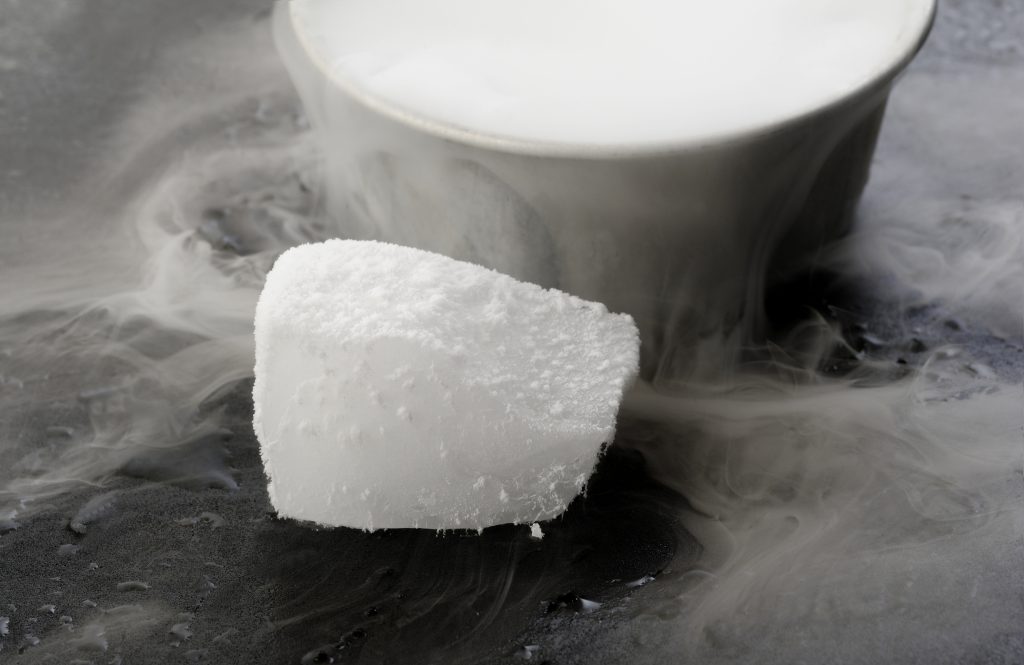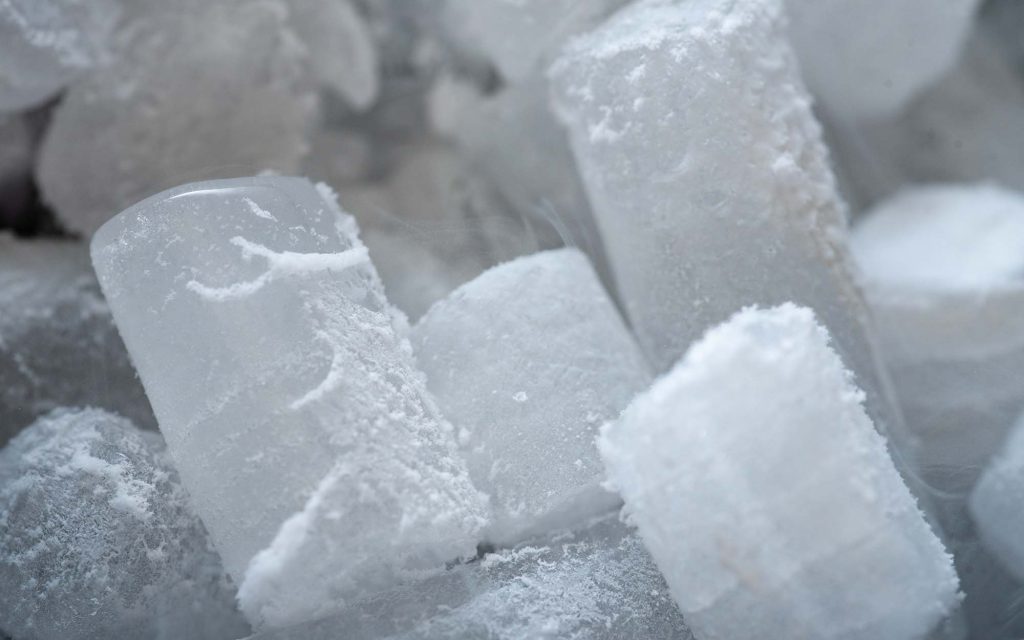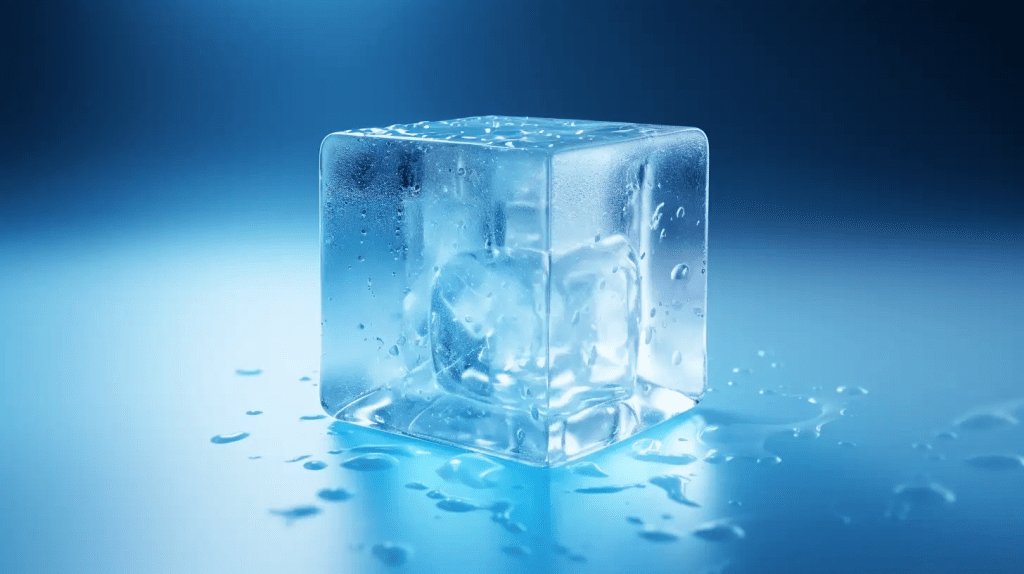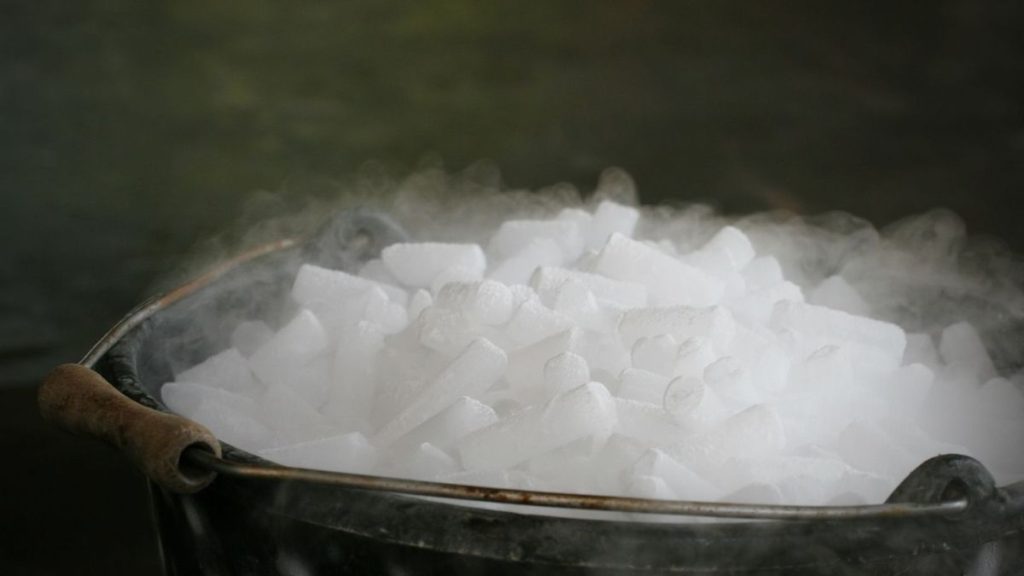- General
- Updated on March 18, 2024
Dry ice vs. Regular ice: What's the Difference?

During hot seasons, there are many options to stay cool, and one popular option is ice. Dry ice vs regular ice are two variants available today. We all know what regular ice is- it is what we drink in our cola during the summer, and dry ice is a solid form of CO2. But which one is better to keep you cool? Do you know that? Let us unwind this together!
Dry Ice vs. Regular Ice: Understanding the Cool Contrast

Whether you’re on the beach or watching a movie in your PVR, you’ll want some refreshments, and what’s better than an icy soft drink? Regular ice is used for this, but dry ice is becoming a more popular option. But what are they?
What are Dry Ice and Regular Ice?
Regular ice is nothing but frozen water (H2O) with a temperature of 32°F (0°C) while dry ice issolid carbon dioxide (CO2) reaching temperatures around -109.3°F (-78.5°C). So, what is the difference between dry ice and carbon dioxide? They are essentially the same thing but in different states.
Cooling Duration and Temperature
Dry ice boasts a much lower temperature, ideal for cold needs. However, it transforms directly into gas and requires more frequent replacements than regular ice, which melts into water that can still provide cooling.
Sublimation process
Unlike regular ice that melts into water, dry ice skips the liquid phase entirely. As it warms, it transforms directly into a solid (CO2 ice) into carbon dioxide gas. No ice melting means dry ice requires more frequent replacements to maintain cooling.
Difference between dry ice and liquid nitrogen?

Dry ice is solid carbon dioxide, while liquid nitrogen is nitrogen-cooled to its liquid state. Dry ice is typically much colder than liquid nitrogen, with a temperature of -78.5 degrees Celsius compared to liquid nitrogen’s temperature of -196 degrees Celsius. Dry ice sublimes directly from a solid to a gas, whereas liquid nitrogen evaporates into a gas. Both substances are common for refrigeration and freezing applications, but dry ice is also often used for visual effects and in the carbonation of beverages.
How to be safe with liquid nitrogen?
Liquid nitrogen has a much higher frostbite risk and can rapidly finish oxygen, leading to suffocation even in larger spaces. Extreme caution and proper safety gear are mandatory when handling liquid nitrogen.
Dry Ice Uses and Applications
Dry ice or solid CO2, whatever you call it, has established it as a valuable tool across diverse fields. Here are the dry ice uses in different segments:

- Preserving Organs: In organ transplantation, dry ice acts as a preserver to minimize cellular damage. Specialized containers utilize dry ice to achieve these frigid conditions, ensuring organs reach recipients for successful transplants.
- Helps in Cryotherapy: Dermatologists use dry ice in a therapeutic technique known as cryotherapy for wart removal. A cooled dry ice is applied directly to the wart to destroy the wart tissue for an effective and targeted treatment option.
- In Aerospace and Automotive Industries: The aerospace and automotive industries rely on dry ice for a technique known as shrink-fitting. This technique shrinks a component to fit in the other component. The component expands after the dry ice sublimates, forming a tight and permanent fit.
- Works as a Non-Abrasive Industrial Cleaning: Dry ice cleaning offers a non-abrasive solution for industrial cleaning challenges. The rapid freezing renders contaminants brittle and susceptible to cracking, enabling easy removal without damaging delicate equipment or areas where water usage is impractical.
- Creating Fog: It is dry ice that creates the dramatic fog you see in horror movies. For example, a small quantity of dry ice submerged in hot water sublimates rapidly, releasing a dense, swirling cloud of carbon dioxide gas, adding atmosphere to the entertainment industry.
- Preserving Biological Samples for Future Exploration: Scientific research requires long-term biological sample storage, such as tissues, blood, and bacteria, at ultra-low temperatures. It helps maintain its conditions enabling scientists to study and analyze samples even years after collection.
Dry Ice Safety Manual
While dry ice offers many benefits due to its extreme coldness and unique properties, it’s crucial to remember that it can also be hazardous if not handled properly. Here’s a detailed breakdown of the safety concerns associated with dry ice and how to mitigate them:
- Causes frostbite: Direct contact with dry ice can cause frostbite. It may cause intense stinging, followed by numbness, discoloration, and blistering of the affected area. In severe cases, tissue death and amputation may occur. Always wear heavy insulated gloves and never touch dry ice with bare skin.
- Risk of Carbon Dioxide Suffocation: Dry ice sublimates to carbon dioxide as it warms up. This CO2 gas buildup can displace oxygen causing suffocation. To prevent, ensure adequate ventilation. Beware of symptoms of CO2 poisoning, such as dizziness, headache, shortness of breath, and nausea.
- Do not eat dry ice and keep it out of children: Dry ice should not be ingested. If swallowed, dry ice can cause internal injuries due to the rapid expansion of the gas.Never leave dry ice unattended around children or pets. They may not understand the dangers and could be seriously injured.
Regular Ice Uses and Applications
Regular ice, the frozen form of water might seem like a simple household staple. Here’s a look at the regular ice uses:

- Cooling and Preservation: The most common use of regular ice is for chilling beverages and keeping food cold. It’s essential for picnics, barbecues, and everyday use in refrigerators and coolers. Crushed ice is great for packing around perishable food items in coolers or shipping containers to slow down spoilage.
- Medical Applications: Regular ice packs are a common remedy for reducing swelling and inflammation caused by injuries. The cold temperature numbs the area and constricts blood vessels, minimizing pain and discomfort.
- Scientific Research: Regular ice baths are used in some chemical reactions to maintain a specific low temperature, ensuring optimal reaction conditions.
Advantages of Regular Ice:
- Cost-Effective
- Safe and Easy to Handle
- Long-lasting Cooling
Regular Ice vs. Dry Ice: Environmental Impacts
Both regular ice and dry ice have minimal environmental impact, but there are some nuances to consider:

Regular Ice
Regular ice is simply frozen water (H2O), a naturally occurring and abundant resource. When it melts, the water returns to the environment. Also, the electricity to run freezers or industrial ice machines is low compared to other industrial processes.
Dry Ice
The production of dry ice involves solidifying carbon dioxide. This process can have a carbon footprint depending on the energy source used. While CO2 is a natural greenhouse gas, large-scale dry ice production can contribute slightly to the greenhouse effect.
For both regular ice and dry ice, minimizing waste is key. Use the appropriate amount. Consider reusable ice packs whenever possible. These can be a more sustainable choice in the long run, especially for frequent applications.
Here’s a quick reference table:
| Feature | Dry Ice | Regular Ice |
| Temperature | Extremely Cold (-109.3°F or -78.5°C) | 32°F (0°C) |
| State Change | Sublimation (solid to gas) | Melting (solid to liquid) |
| Cost | Expensive | Cheap |
| Safety | Requires Precautions (frostbite, suffocation) | Safe to Handle |
| Cooling Duration | Shorter (sublimates) | Longer (melts into water) |
| Applications | Organ preservation, scientific research, industrial cleaning | Food & beverage chilling, food preservation, cold therapy |
Fun Facts About Dry Ice and Regular Ice
While both regular ice and dry ice keep things frosty, here are some surprising facts that highlight their unique characteristics:
Dry Ice
- Dry ice does not get wet even in cold temperatures.
- It is denser than air and sinks in a container filled with air. However, when placed in water, it floats due to the buoyancy of the CO2 gas bubbles.
Regular Ice
- Unlike most substances, water becomes less dense as it freezes, so ice cubes float in water. This unusual property is crucial for life on Earth, as frozen lakes and oceans wouldn’t insulate the underwater environment if ice sank.
- People have been using ice for food preservation for thousands of years. The Chinese were some of the earliest to utilize natural ice.
- Regular ice isn’t as cold as dry ice! It may feel cold for human touch but what if you touch dry ice? It gives you burns, so you know!
Read Also : What is Difference Between Analog And Digital Hearing Aids
FAQs:
1. Where to buy dry ice near me?
To buy dry ice nearby- a quick web search can help you locate retailers selling dry ice in your area. Buying dry ice is easy via dry ice suppliers, contact your local area sellers and they will transport it to your home safely.
2. How to make dry ice at home?
Making dry ice at home is not recommended. It’s a dangerous process that requires specialized equipment and can result in serious injuries. Dry ice is readily available from some grocery stores or ice suppliers.
3. How long does dry ice last?
The duration depends on factors like size, storage conditions, and surface area exposed.
4. What is better for shipping: Dry ice vs. ice packs?
Dry ice offers superior cooling for extended durations, but proper handling and ventilation are crucial.
5. Is Dry ice costly?
Yes! Dry ice is generally more expensive than regular ice due to its production and storage requirements. However, the benefits it has make it a better option though.
Conclusion
So, Dry ice vs. Regular ice: Which is better? There’s no better option between dry ice and regular ice – Ultimately, the best choice depends on your specific needs! Consider factors like temperature requirements, duration of cooling needed, cost, and safety considerations.
By understanding the strengths and limitations of dry ice and regular ice, you can make an informed decision and keep things cool the right way!
Join the discussion
Related Articles
Trending Articles


- Health
- Updated on July 16, 2025


- General
- Updated on July 16, 2025


- General
- Updated on July 14, 2025


- General
- Updated on July 12, 2025


- General
- Updated on July 12, 2025


- General
- Updated on July 8, 2025


- General
- Updated on July 7, 2025


- General
- Updated on July 8, 2025


- General
- Updated on July 4, 2025


- General
- Updated on July 2, 2025
No results available
Reset


